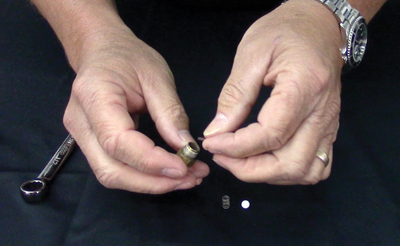
Chemical Injector Troubleshooting
By Dan Galvin / Published November 2022
The thing about troubleshooting is that one should try to avoid the need to fix something in the first place. However, we all have those days where the motivation to end the workday is stronger than the desire to keep at it. Because the title of this article isn’t “Green Bubble Gunk—Results of Leaving Acid in Your Brass Injector,” let me note here that I know from personal experience trouble happens when you don’t take care of your equipment. With that admission, let’s transition into some less embarrassing and more helpful injector troubleshooting advice!
There are two main types of chemical delivery systems, upstream and downstream. In this article we will be talking about downstream chemical injectors.
The downstream chemical injector, also known as the venturi injector, is very simple in design and operation, with only two moving parts on the fixed injector—the check valve ball and the spring. The adjustable injector adds one more moving part—the needle valve or screw.
When someone calls and says their injector stopped working, the first thing I ask them to do is to remove everything off the outlet and the inlet barb of the injector; then check and see if the injector is working. SAFTEY NOTE! The water will shoot out 15 to 20 feet so make sure it’s pointed in a safe direction.
With the pressure washer running and the water flowing through the injector, place your finger over the inlet barb hole. You should feel a vacuum. If you do, the injector is working, and that means there is something after the injector causing back pressure and stopping it from working. Check the chemical line for a blockage or restriction. If it’s clear, replace the hose on the injector hose barb, making sure there is a tight fit and no air leaks.
Next, add just the high-pressure hose to the injector with nothing on the end. If the injector is working with just the hose on it, add your trigger gun with no nozzle on it and test it. If the injector is not working with only the hose attached, replace the hose. The inside of the hoses can swell over time from chemicals and cause back pressure that will stop your chemical injector from working.
If the injector doesn’t work with the trigger gun attached, replace the trigger gun. The type of trigger gun that’s used makes a huge difference in the amount of chemical that can be drawn with your chemical injector. If you’re using a trigger gun that is rated for 6 to 7 gpm with a 9/32 ball inside, you will draw less chemical through your chemical injector. Using a 12 to 13 gpm gun that has a 13/32 ball inside it, you will draw a higher percentage of chemical through your chemical injector. Keep in mind, using smaller diameter hoses, such as a ¼-inch one used on the outlet side of the chemical injector, will not allow you to draw the chemical.
If you don’t feel a vacuum and you have an adjustable injector, check to see if the valve is open. If you have a fixed injector or an adjustable one and the valve is open, turn the pressure washer off. Remove the chemical injector and check for debris in the chemical inlet hose barb and the injector body. You could have scale deposits inside the injector, which could cause a disruption in the venturi effect used to draw the chemical. You may also have damage from acids or harsh chemicals on the inside of the injector that will cause it to stop working. A stainless-steel injector is a good choice if you use
acidic, caustic, or corrosive chemicals.
An air leak on the inlet side of your high-pressure pump will cause the injector not to work. An air leak will cause cavitation in the pump, and your high-pressure hose will vibrate or chatter. If this is occurring, check the supply line on your pump, tighten hose clamps, and check the hose for damage.
If you received a new injector and it does not work, the ball in the hose barb could be stuck to the o-ring. Use a paper clip or a small drill bit and insert it into the barb hole to loosen the ball from the o-ring. If you have a repair kit and remove the hose barb, watch out for flying springs—those suckers can get away from you pretty quickly!
Do you have the correct injector size for your pressure washer?
Chemical injectors are sold by gpm (gallons per minute), and you will need to know the gpm of your pressure washer to purchase the correct injector size. Purchasing an injector that is too small for your pressure washer can cause higher than normal pressure. It may also damage your unloader, overwork your engine, and reduce the water flow, which in turn will reduce your pressure. A chemical injector that is too large will draw little to no chemical.
Finally, remember preventive care is always the best troubleshooting. Here’s to enough energy to PowerThrough!™ your workday and enough common sense to not leave acid overnight in a brass injector!
Dan Galvin is EnviroSpec’s president and CEO and has worked in the power washing industry for 20 years. If you have more questions for Dan, contact him at (800) 346-4876 or visit www.envirospec.com.







